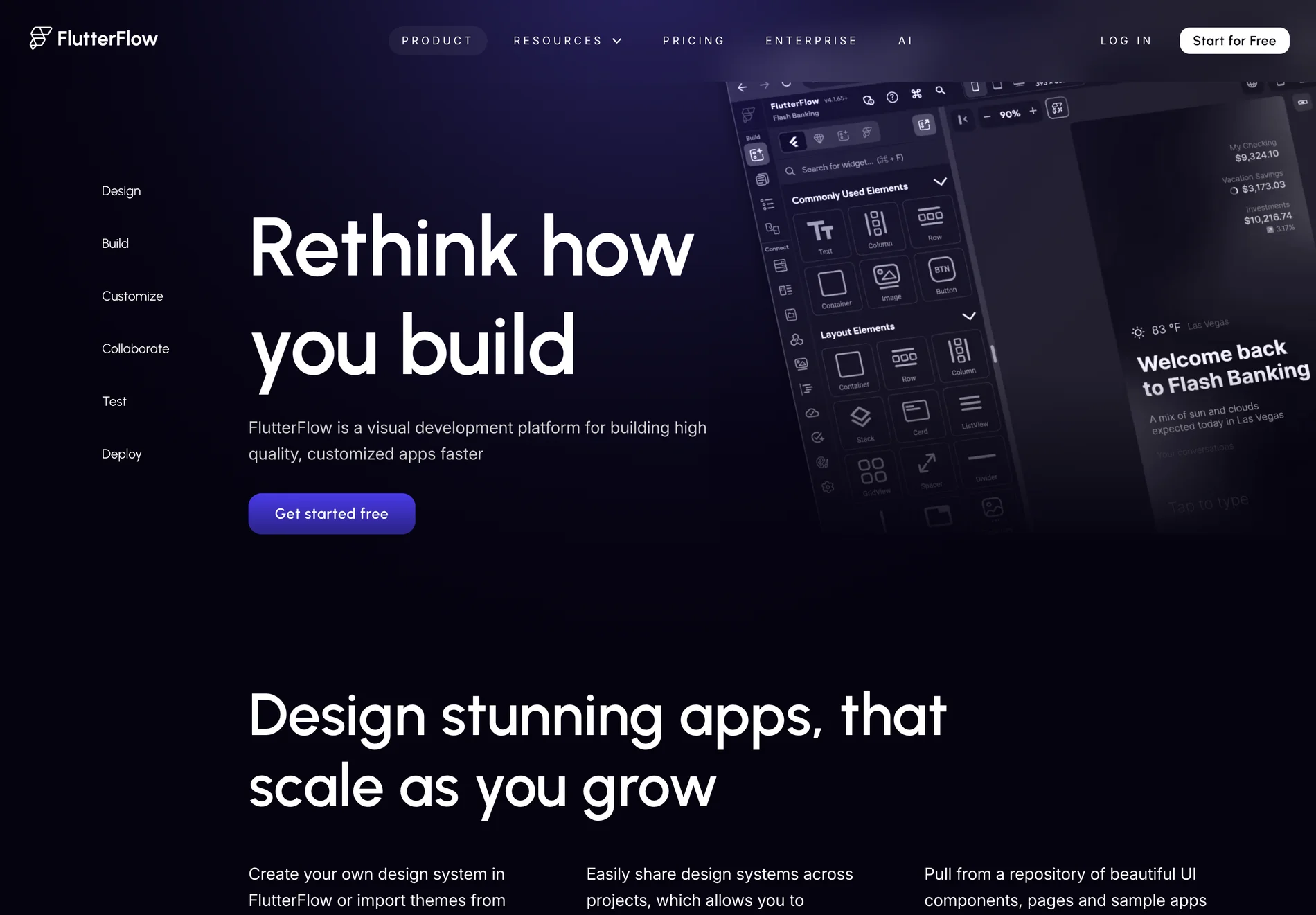FlutterFlow: A Visual Development Platform for Building High-Quality Apps
FlutterFlow is a revolutionary visual development platform that empowers users to build high-quality, customized apps significantly faster than traditional methods. It streamlines the app development process, allowing both beginners and experienced developers to create sophisticated applications with ease. This platform distinguishes itself through its intuitive visual interface, extensive UI component library, and robust integration capabilities.
Key Features and Benefits
- Visual Development: FlutterFlow's core strength lies in its visual development environment. Users can drag and drop UI elements, connect them with intuitive logic, and see real-time changes without writing extensive code. This visual approach drastically reduces development time and complexity.
- Extensive UI Component Library: The platform boasts a rich library of over 200 configurable UI elements, pre-built pages, and sample apps. This accelerates development by providing readily available components that can be customized to match specific design requirements.
- Live Data Integration: FlutterFlow seamlessly integrates with popular backend services like Firebase and Supabase, enabling developers to connect their apps to live data sources. The platform also supports custom backend integration via RESTful APIs.
- Granular Control and Customization: While offering a visual interface, FlutterFlow doesn't compromise on customization. Users can leverage custom Dart functions and Flutter widgets for advanced functionalities and fine-grained control over their app's behavior and appearance.
- Collaboration Features: FlutterFlow facilitates seamless collaboration among team members. Multiple users can simultaneously view, edit, and test the app without needing to install any software on their machines. The platform also supports advanced branching features for efficient version control.
- Testing and Debugging: Built-in automated testing tools and a dedicated debug panel help ensure app stability and facilitate efficient troubleshooting. Users can test their apps on real devices using Local Run or by exporting the code and running it in popular IDEs like VSCode or Android Studio.
- Cross-Platform Deployment: FlutterFlow allows for easy deployment across multiple platforms, including iOS, Android, and web, with just a few clicks. The platform provides full control over the deployment process and ensures that developers retain ownership of their intellectual property.
- Integration Capabilities: FlutterFlow offers various integrations to expand app functionality, including payment gateways, mapping services, and AI capabilities.
Comparisons with Other Platforms
Compared to traditional native app development, FlutterFlow offers a significant advantage in terms of speed and ease of use. While platforms like Xcode and Android Studio require extensive coding knowledge, FlutterFlow empowers users with limited coding experience to build functional and visually appealing apps. Compared to other no-code/low-code platforms, FlutterFlow stands out due to its deep integration with Flutter, providing greater flexibility and customization options.
Conclusion
FlutterFlow is a powerful and versatile platform for building high-quality mobile and web applications. Its visual development environment, extensive component library, and robust integration capabilities make it an ideal choice for developers of all skill levels. The platform's focus on collaboration, testing, and easy deployment further enhances its appeal, making it a compelling option for individuals and teams seeking to streamline their app development workflow.

